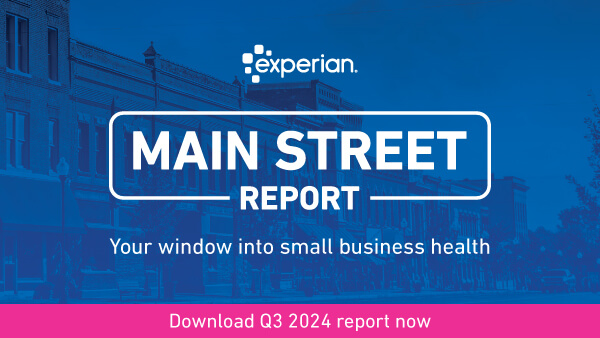Report
Published May 25, 2023
Commercial Commercial InsightsQ1 GDP grew by 1.1% annualized, following a 2.6% gain in Q4 2022. However, recent data's accuracy is affected by weather-induced consumer spending and unusual seasonal adjustments. Notably, Q1 GDP doesn't reflect the impact of tightened lending standards yet. The core of the economy, measured by real final sales to domestic purchasers, rose by a solid 2.9% annualized, driven by strong consumer spending concentrated in early Q1 and aided by significant cost-of-living payments. Inventory reduction subtracted 2.3ppts from Q1 GDP growth, and this trend is expected to persist as businesses draw from existing stockpiles to meet demand. The Oxford Economics US Business Cycle Indicator declined for two consecutive months, indicating weak Q1 performance. The indicator suggests feeble Q2 growth and a possible H2 2023 recession.
Download the report
View now Video
Video
Navigating Industry-Specific Risks
Experian's latest Commercial Pulse Report highlights how risk profiles vary significantly by industry and business age.
🔹 New businesses in sectors like Construction and Food Services face higher delinquency rates, signaling elevated credit risks.
🔹 Meanwhile, industries like Retail and Healthcare maintain stable performance, regardless of business maturity—offering balanced opportunities for lenders.
Understanding these dynamics is critical for tailoring lending strategies, mitigating risk, and supporting business growth across industries.
Check out the full report to see how these trends could impact your strategy!
 Webinar
Webinar
Q3 2024 Quarterly Business Credit Review
Watch the recording of the Quarterly Business Credit Review webinar, where Experian shared and discussed critical insights from the latest Main Street Report.
Why you should watch:
- Leading Experts on Commercial and Macro-Economic Trends
- Credit insights and trends on 30+ Million active businesses
- Industry Hot Topics Covered (Inclusive of Business Owner and Small Business Data)
- Commercial Insights you cannot get anywhere else
- Peer Insights with Interactive Polls (Participate)
- Discover and understand small business trends to make informed decisions
- Actionable takeaways based on recent credit performance
Visit our Commercial Insights Hub for more economic insights and reports on small business.
 Report
Report
Q3 2024 Experian Main Street Report
The U.S. (United States) has been in a state of suspended animation from a small business perspective. The domestic election cycle was full of promises focused on government spending to resolve consumer and small business perceived challenges for the next four years. As we emerge from the election cycle, with a clean transition expected, what rhetoric will become a reality is creating uncertainty among lenders and small businesses. Macroeconomic indicators are leaning positive, while stubborn inflation increases prices and borrowing costs. Lenders are targeting a looser environment for underwriting as cashflows remain positive and small businesses feel the rush of holiday shopping. Growth is coming in 2025; the question is how quickly companies can prepare and maneuver through the next 6 months of policy and global volatility.
 Video
Video
Construction Industry Resilience
The November 2024 Commercial Pulse Report is here, and it’s packed with critical data on the construction sector’s resilience and the challenges ahead.
🔑 Key Highlights:
- Businesses are shifting from term loans to commercial credit cards for greater flexibility.
- Delinquencies in construction remain lower than other industries, showcasing financial strength.
- High housing demand continues to fuel opportunities despite rising costs and tight credit.
Whether you're navigating financing strategies or tracking industry growth, these insights are a must-read for construction professionals and business analysts.
📥 Download the full report now and stay ahead of the trends shaping the construction landscape.
Check out the full report to see how these trends could impact your strategy!